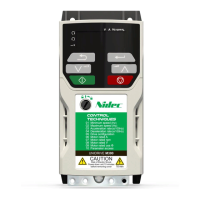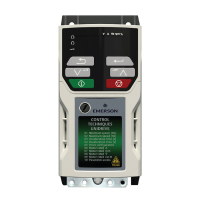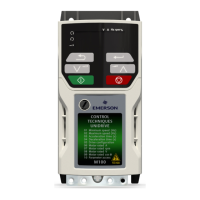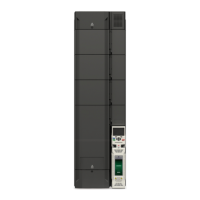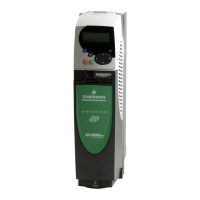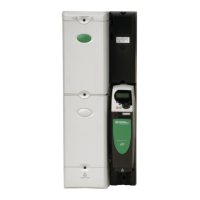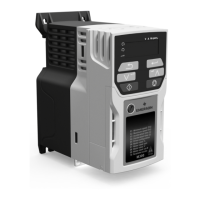132 SI-Ethernet User Guide
Issue: 1
By choosing the most appropriate transmission type an efficient and reliable network
can be designed.
For example:
• Three drives must use an ELS (Electronic Line Shaft) to follow a Smart Drive.
In this case a multicast message should be used to transmit the reference
position from the Smart Drive.
• Three drives need to return general status information to the Smart Drive.
In this case, each drive should send a unicast message to the Smart Drive.
• The Smart Drive needs to command all other drives to stop/start.
The Smart Drive should use a broadcast message to transmit the command to
all the other drives.
Unicast
A unicast link will only be processed by the specified destination address, the
transmitting device specifies the destination address in S.10.015, S.10.025 or S.10.035
(Tx1, Tx2 or Tx3 respectively) and the receiving link in the relevant device must be set
to “Direct” in S.10.044, S.10.054 or S.10.064 (Rx1, Rx2 or Rx3 respectively).
Multicast
A multicast link can be processed by more than one destination address, the
transmitting device configures the multicast address group (Multicast1, Multicast2,
Multicast3 or Multicast4) in S.10.014, S.10.024 or S.10.034 (Tx1, Tx2 or Tx3
respectively), the appropriate multicast destination address is automatically set in
S.10.015, S.10.025 or S.10.035 (Tx1, Tx2 or Tx3 respectively), a receiving link on the
same network must be configured to use the same multicast address group as specified
in S.10.014, S.10.024 or S.10.034 (Tx1, Tx2 or Tx3 respectively) in S.10.044, S.10.054
or S.10.064 (Rx1, Rx2 or Rx3 respectively).
Any device on the same network as the transmitting device may be configured to
receive a multicast message.
Each cyclic link can be configured for one of four multicast addresses, this means that
on any given network, there may be up to four groups of multicast addresses.
The multicast addresses used are in the local scope addresses ranging from
239.255.0.1 to 239.255.0.4.
Broadcast
A broadcast link can be processed by any device on the network, the transmitting
device sets the message type as “Broadcast” in S.10.014, S.10.024 or S.10.034 (Tx1,
Tx2 or Tx3 respectively), the broadcast IP address (255.255.255.255) will be
automatically set in S.10.015, S.10.025 or
S.10.035 (Tx1, Tx2 or Tx3 respectively), a
receiving link on the same network must be configured to “Direct” in S.10.044, S.10.054
or S.10.064 (Rx1, Rx2 or Rx3 respectively).
Any device on the same network as the transmitting device may be configured to
receive a broadcast message.
Broadcast messages should be used with care, bottlenecks in the network can be
easily created by using broadcast messages, this will reduce the performance of the
network and, in extreme situations, seriously impair the system operation.
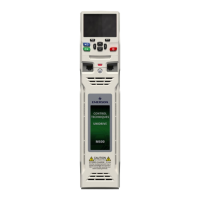
